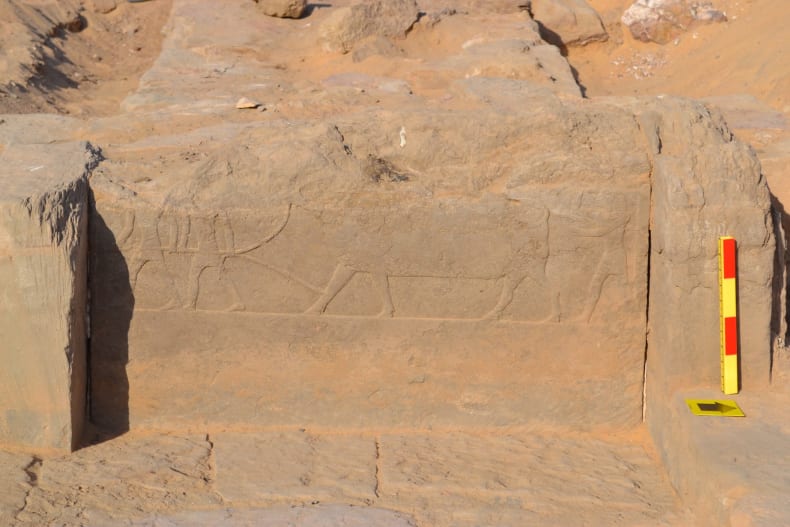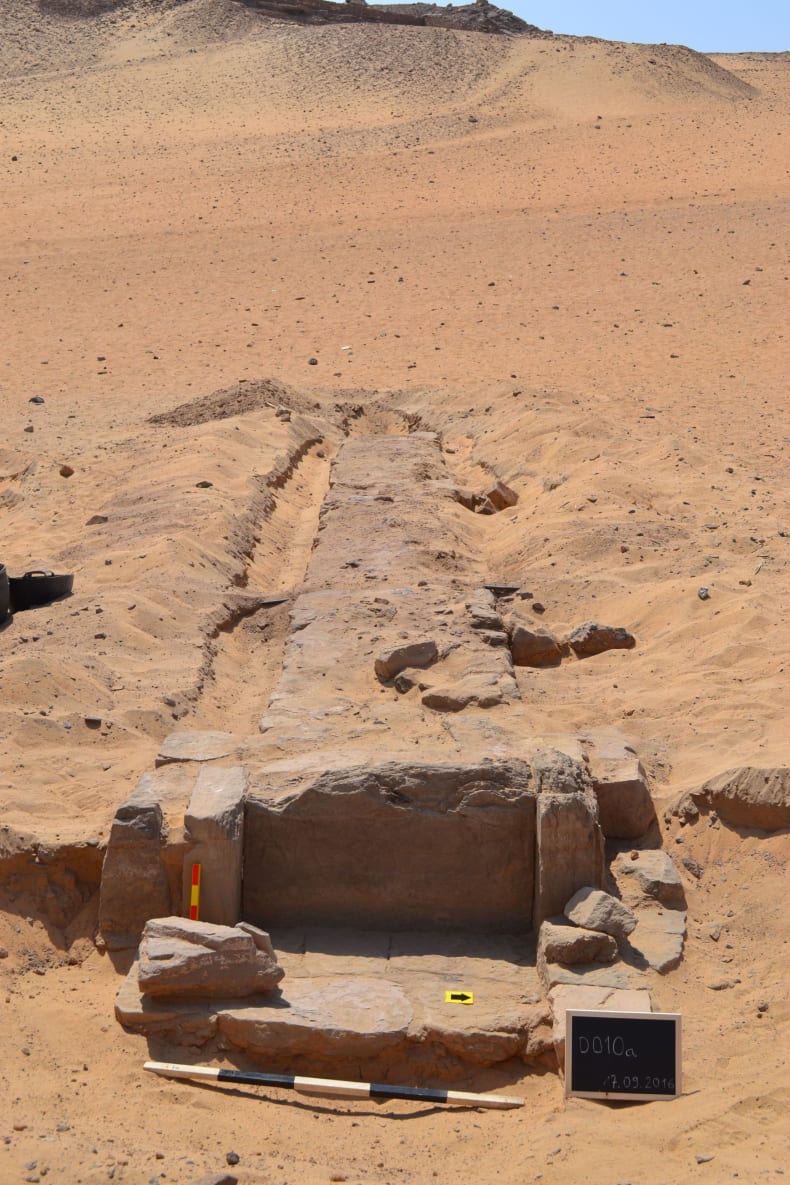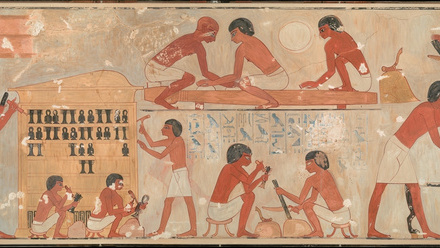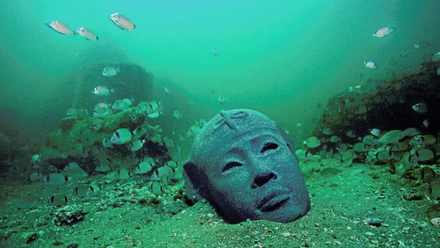Discovery of the Causeway of Sarenput I
The joint University of Birmingham - Egypt Exploration Society Research Project at Qubbet el-Hawa (QHRP) has discovered the long searched for causeway of Sarenput I, as reported by the Ministry of Antiquities here.
Dr. Mahmoud Afify, Head of Egyptian Antiquities stated that the causeway has recently been uncovered in a discovery that changed the topography of the Qubbet el-Hawa region known for centuries. Mr. Hany Azim, Under Secretary of State of Upper Egypt, described the find as a major break-through which happened shortly after the British archaeology mission started scientific work in this area at the beginning of this year.Mr. Nasr Salama, General Director of Aswan and Nubia Antiquities, add this discovery happened shortly after the British archaeology mission started scientific work in this area at the beginning of this year. This discovery comes in the framework of the archaeological work which the British archaeological mission does in cooperation of the Aswan region to develop the Qubbet el-Hawa area and support the work carried out by the mission.
Dr. Martin Bommas, director of the QHRP explained that a relief was discovered on the eastern face of the northern wall of the causeway. He went on describing that the relief shows a funerary scene in raised relief which is the southernmost example of funerary relief art of the early Middle Kingdom found in Egypt. It is made of blue sandstone, a building material only available in the area of Shat elSaba Regal near Kom Ombo which was used at the mortuary temple of Mentuhotep II at Deir el-Bahari and the temple for Satet on the Island of Elephantine.
Mr. Essam Nagy, co-director of the QHRP and representative of the EES in Cairo reported that the survey which was long overdue uncovered an archaeological site that has never been worked on or published despite the fact that excavations started in 1885 by British archaeologists already.
A dig within the vicinity of the causeway yielded pots tumbled within a pit. Dr. Eman Khalifa, director of the pottery project of the QHRP clarified that those particular pots with shallow lids were in use during the Late Period. Similar examples are known from the Embalmer’s Cache discovered in Saqqara. The pots, she carried on, show visible remains of their contents. Further chemical analysis will be carried on in the future to identify the compound, and hence shed light on the substances used for embalming and preserving the bodies of the ancient Egyptians.
The recent find was part of the first season of the QHRP team which mainly consists of Egyptian academics and scholars. It confirms the hypothesis that Sarenput I had built a causeway which reached close to the borders of the river Nile. With a length of 133 meters it is the longest causeway ever built on the west bank of Aswan, used to access his tomb and ritually bury Sarenput I, the first governor of the area at the beginning of the Middle Kingdom. The decoration of the causeway was already underway in year 10 of the reign of Senwosret I (1910 BC). As the pottery shows, the causeway was in use for almost 600 years as a place of memory and funerary ritual activities.

Relief at the end of the causeway

View of the causeway, up towards the Qubbet el-Hawa necropolis



